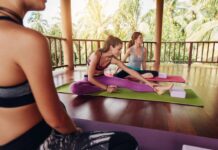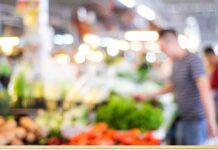HAND SANITIZER KILL GERMS – BUT DOESN’T CLEAN YOUR HANDS
Soap and water reign supreme when it comes to infection control, but believe it or not, soap and water do not kill germs; they remove them. The duo’s effectiveness boils down to the mechanics of hand washing.
The rubbing and scrubbing of soap between your palms and fingers creates friction that breaks down the structure of the bacteria and loosens the germs from your skin. When you rinse your hands under water, you wash those germs down the drain.
Alcohol-based hand sanitizers, on the other hand, do kill most germs on the skin. Hand sanitizer is less effective at killing Cryptosporidium, norovirus and Clostridium difficile, all of
which cause diarrhea, the Centers for Disease Control and Prevention (CDC) says. Scientists suspect hand sanitizer does, however, kill the coronavirus.
Hand sanitizers also don’t work as well if your hands are visibly dirty or greasy, and they may not remove harmful chemicals such as pesticides and heavy metals like lead.
When to use HAND SANITIZERS
Because handwashing — when done properly — is better at getting rid of germs and grime, hand sanitizer, for the most part, should be used as a backup to soap and water.
So, the time to use hand sanitizer is when you can’t get to a sink and some clean water and a clean towel.
Nonetheless, the CDC recommends using hand sanitizer as a first choice in certain situations, such as before and after visiting a friend or loved one in a hospital or nursing home. (That’s why you’ll often see dispensers posted directly outside patient rooms.)
A squirt of hand sanitizer on your way in and out reduces the likelihood you’ll introduce a dangerous bug or leave with one. It’s also a good idea to use hand sanitizer regularly when interacting with people who have weakened immune systems.
Not all hand sanitizers ARE CREATED EQUAL
To kill most disease-causing germs, the CDC recommends using a hand sanitizer that contains at least 60 percent alcohol. Anything less than that may not work as well “for many types of germs,” and could “merely reduce the growth of germs rather than kill them outright,” the CDC says.
When searching the shelves, you may come across hand sanitizers that contain benzalkonium chloride instead of alcohol. These products, however, are not recommended by the CDC, since “available evidence indicates benzalkonium chloride has less reliable activity against certain bacteria and viruses” compared to alcohol-based sanitizers.
It’s how you do it… TECHNIQUE MATTERS
Hand sanitizer works best when used correctly. Apply the recommended amount to the palm of your hand (make sure it’s enough to cover the entire surface of both hands) and distribute the sanitizer all over, paying special attention to the fingertips, “because that’s where you touch most other things,” Larson says.
Continue rubbing the hand sanitizer into your hands until your skin is completely dry — it should take about 20 seconds. This step is key. (See diagram) The alcohol works and it does kill the virus and most bacteria. But, quite often people don’t use it appropriately for the proper amount of time.
Use the real thing. NO SUBSTITUTES FOR HAND SANITIZERS
Disinfectant sprays and antibacterial cleaning wipes should not be used as stand-ins for hand sanitizer. These products are meant for “hard, nonporous surfaces,” not human skin, the Food and Drug Administration (FDA) says.
Even so, some people are using them this way. A report released by the CDC in early June
found that approximately one-third of adult respondents in a recent survey engaged in
“non-recommended high-risk practices” with cleaning supplies in an effort to prevent a
coronavirus infection.
These practices included using bleach on food products, applying household cleaning and
disinfectant products to skin and inhaling or ingesting cleaners and disinfectants — all of
which are unsafe.
Even with HAND SANITIZERS – USE CAUTION
Hand sanitizers can be toxic when ingested, especially by children. It can irritate the lining of the throat and cause gastrointestinal issues. And “drinking only a small amount” can cause alcohol poisoning in kids, according to the FDA. If you or your child ingest hand sanitizer, call poison control or a medical professional immediately.
Hand sanitizer is also flammable.
Though the CDC says the incidence of fires due to alcohol-based hand sanitizer is “very low,” it advises hospitals, nursing homes and other health care facilities to store hand sanitizer in a safe manner away from sources of ignition.
The U.S. Postal Service also has restrictions on shipping alcohol-based hand sanitizer through the mail due to flammability concerns
Homemade hand sanitizer? MAYBE NOT.
There’s no shortage of recipes for homemade hand sanitizer on the internet during this pandemic era. But, the FDA and other experts, who regulate and recommend hand sanitizers, warn it’s best to leave the production of germ-killing gels to the professionals.
“If made incorrectly, hand sanitizer can be ineffective, and there have been reports of skin burns from homemade hand sanitizer,” the FDA states.
Also: Adding rubbing alcohol to a bottle of non-alcohol hand sanitizer will not make the sanitizer more powerful. The FDA says it “is unlikely to result in an effective product.”


Subscribe To Our VIP Newsletter
Join our VIP mailing list to receive additional content that goes even deeper into the latest tips to ensure you and your families health, fitness and wellness.























